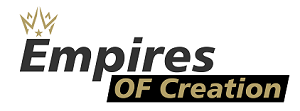Digital training platforms provide an innovative and efficient way to enhance the skills and knowledge of restaurant staff. By employing these platforms, restaurants can streamline training processes, improve employee performance, and ensure consistent service quality. Let’s delve into the implementation of Learning management system for restaurants.
Benefits of Digital Training Platforms
- Consistent Training: Digital platforms ensure that all staff members receive consistent training materials and instructions, leading to a standardized skill set across the restaurant.
- Accessibility: Staff can access training materials at their convenience, allowing for self-paced learning and reducing the impact on operational productivity.
- Personalization: Platforms can offer personalized training modules tailored to specific roles, ensuring that each staff member receives relevant and targeted training.
- Engagement: Interactive features, such as quizzes, videos, and gamification, can enhance staff engagement and knowledge retention.
- Cost-Effective: Over time, digital training platforms can reduce training costs associated with traditional methods, such as printed materials and off-site training sessions.
Key Considerations for Implementation
- Platform Selection
It is essential to choose a training platform that caters to the specific needs of the restaurant. Consider factors such as user interface, content management, scalability, and compatibility with mobile devices.
- Customization and Content Creation
The platform should allow for the creation of customized training content. This could include company-specific tutorials, safety procedures, food handling guidelines, and customer service best practices.
- Integration with Existing Systems
Ensure that the digital training platform integrates seamlessly with existing restaurant management systems, such as scheduling software and performance evaluation tools.
- Staff Engagement
Implement features that incentivize staff participation, such as badges for completing modules, leaderboards, and reward systems for achieving training milestones.
- Feedback and Assessment
Include assessment tools to gauge staff comprehension and provide feedback mechanisms for continuous improvement.
“DineWell Restaurant Group”
The Challenge
The DineWell Restaurant Group sought to modernize its training processes for staff across its multiple restaurant locations. The company faced challenges in ensuring consistent training standards and minimizing operational disruptions during traditional training sessions.
Solution
DineWell adopted a digital training platform, “DineLearn”, tailored to its unique operational requirements. The platform allowed staff to access a library of training materials covering food safety, customer service, menu knowledge, and operational procedures. In addition, managers could track staff progress and identify areas for improvement.
Results
- Consistency in Training: All DineWell staff members received standardized training materials, ensuring uniform skill development across locations.
- Increased Engagement: Staff engagement with training materials improved significantly due to interactive content and a user-friendly interface.
- Cost Savings: The move to digital training reduced the company’s reliance on printed materials and off-site training, resulting in cost savings.
Bottom Line
Learning management system for restaurants presents an opportunity to enhance training effectiveness, engagement, and cost-efficiency. By carefully selecting and customizing a platform, integrating it with existing systems, and tracking staff progress, restaurants can elevate the skill level and performance of their staff, ultimately enhancing the overall dining experience for customers.
